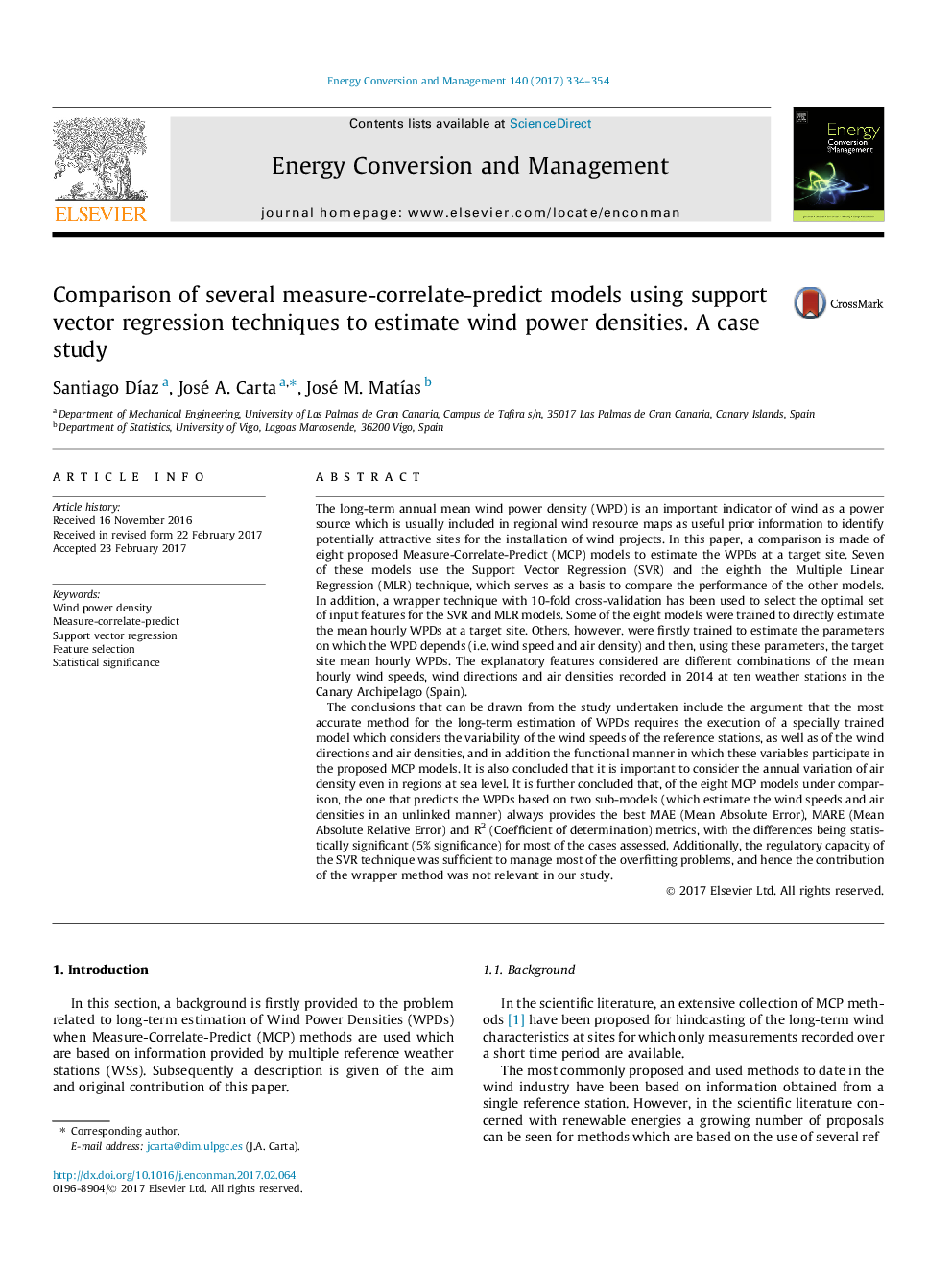ترجمه فارسی عنوان مقاله
مقایسه چند مدل پیش بینی اندازه گیری-همبستگی با استفاده از تکنیک های رگرسیون برداری برای برآورد تراکم توان باد. یک مطالعه موردی
عنوان انگلیسی
Comparison of several measure-correlate-predict models using support vector regression techniques to estimate wind power densities. A case study
| کد مقاله | سال انتشار | تعداد صفحات مقاله انگلیسی |
|---|---|---|
| 110438 | 2017 | 21 صفحه PDF |
منبع

Publisher : Elsevier - Science Direct (الزویر - ساینس دایرکت)
Journal : Energy Conversion and Management, Volume 140, 15 May 2017, Pages 334-354
ترجمه کلمات کلیدی
تراکم قدرت باد، اندازه گیری، همبستگی، پیش بینی، رگرسیون بردار پشتیبانی، انتخاب ویژگی، اهمیت آماری،
کلمات کلیدی انگلیسی
Wind power density; Measure-correlate-predict; Support vector regression; Feature selection; Statistical significance;

